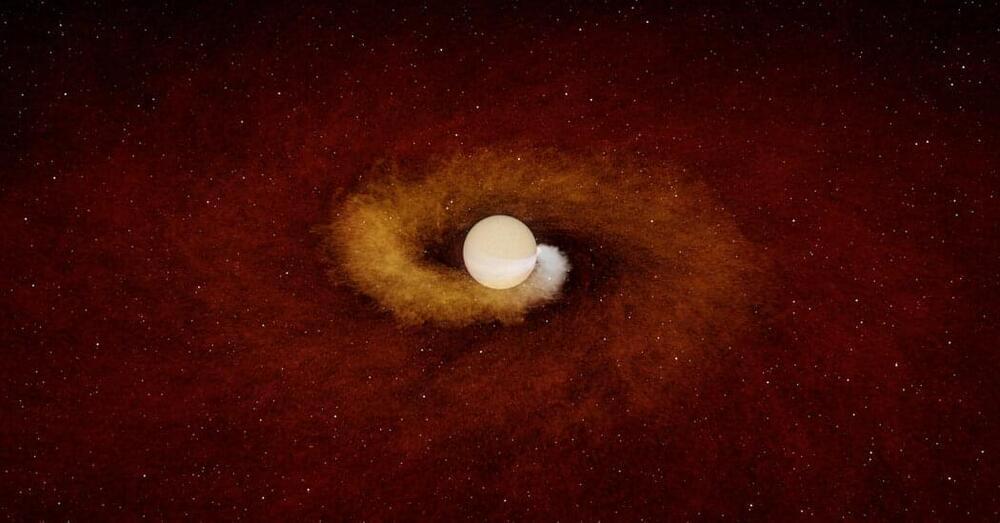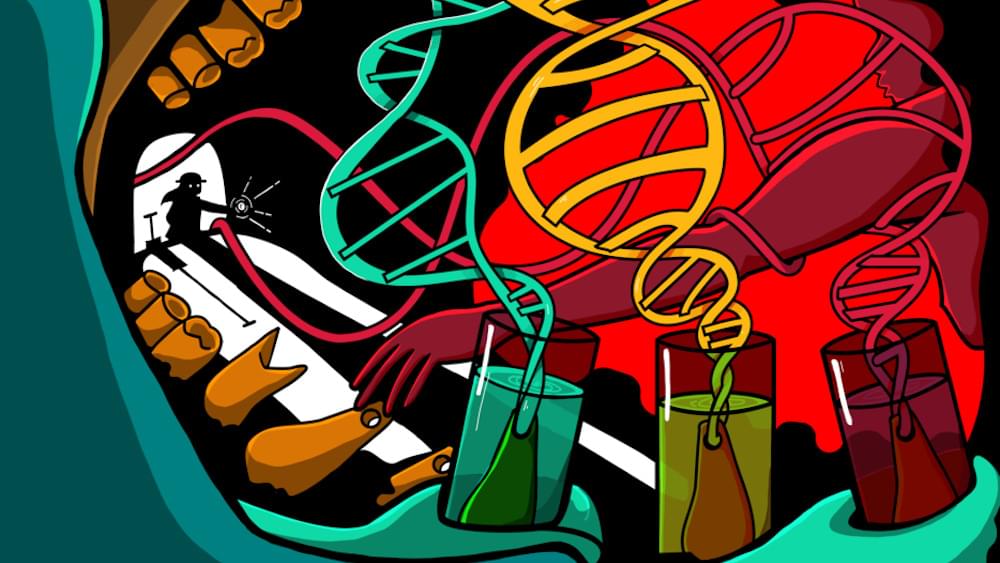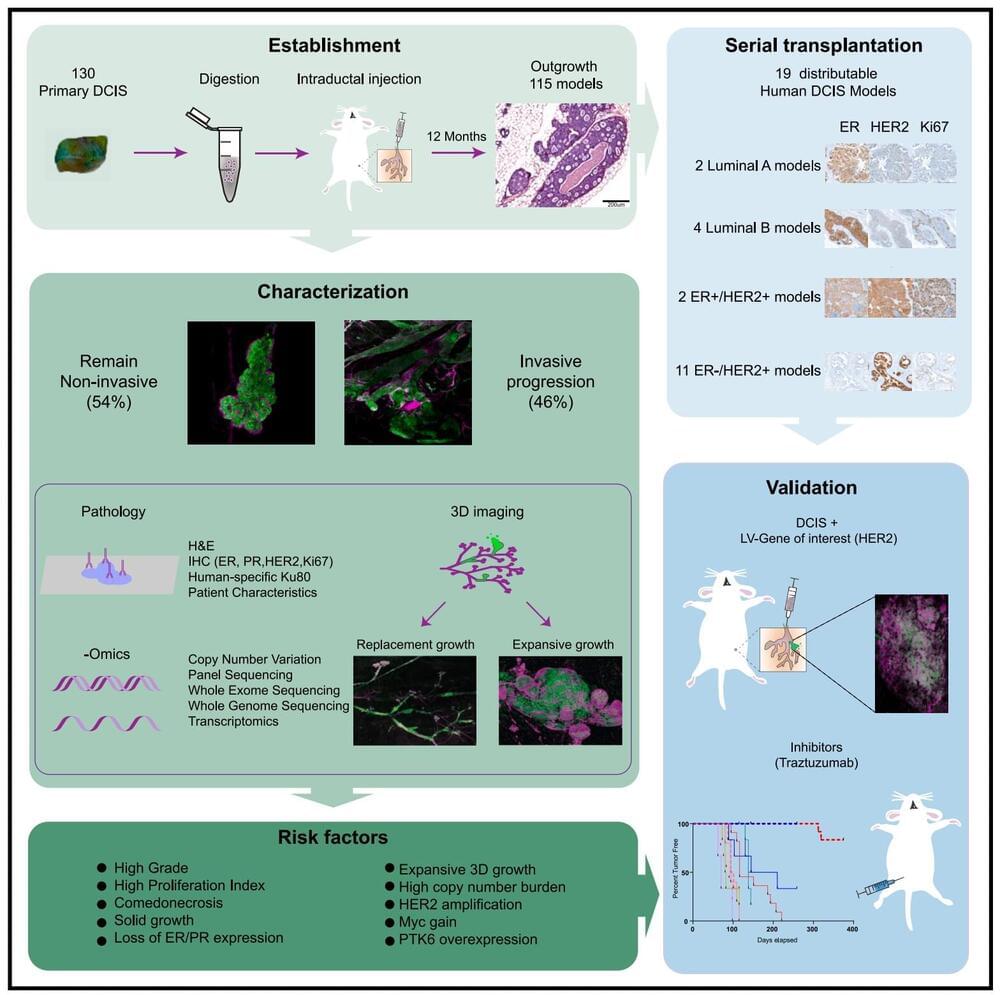Astronomers spotted a dying star swallowing a large planet, a discovery that fills in a “missing link” in understanding the fates of Earth and many other planets.



An artificial intelligence system enables robots to conduct autonomous scientific experiments—as many as 10,000 per day—potentially driving a drastic leap forward in the pace of discovery in areas from medicine to agriculture to environmental science.
Reported today in Nature Microbiology, the research was led by a professor now at the University of Michigan.
That artificial intelligence platform, dubbed BacterAI, mapped the metabolism of two microbes associated with oral health —with no baseline information to start with. Bacteria consume some combination of the 20 amino acids needed to support life, but each species requires specific nutrients to grow. The U-M team wanted to know what amino acids are needed by the beneficial microbes in our mouths so they can promote their growth.
Emerging Metaverse applications demand accessible, accurate, and easy-to-use tools for 3D digital human creations in order to depict different cultures and societies as if in the physical world. Recent large-scale vision-language advances pave the way to for novices to conveniently customize 3D content. However, the generated CG-friendly assets still cannot represent the desired facial traits for human characteristics. In this paper, we present DreamFace, a progressive scheme to generate personalized 3D faces under text guidance. It enables layman users to naturally customize 3D facial assets that are compatible with CG pipelines, with desired shapes, textures, and fine-grained animation capabilities. From a text input to describe the facial traits, we first introduce a coarse-to-fine scheme to generate the neutral facial geometry with a unified topology. We employ a selection strategy in the CLIP embedding space to generate coarse geometry, and subsequently optimize both the details displacements and normals using Score Distillation Sampling from generic Latent Diffusion Model. Then, for neutral appearance generation, we introduce a dual-path mechanism, which combines the generic LDM with a novel texture LDM to ensure both the diversity and textural specification in the UV space. We also employ a two-stage optimization to perform SDS in both the latent and image spaces to significantly provides compact priors for fine-grained synthesis. Our generated neutral assets naturally support blendshapes-based facial animations. We further improve the animation ability with personalized deformation characteristics by learning the universal expression prior using the cross-identity hypernetwork, and a neural facial tracker for video input. Extensive qualitative and quantitative experiments validate the effectiveness and generalizability of DreamFace. Notably, DreamFace can generate of realistic 3D facial assets with physically-based rendering quality and rich animation ability from video footage, even for fashion icons or exotic characters in cartoons and fiction movies.

From René Descartes to the Wachowskis (directors of the Matrix trilogy, amongst others) to Elon Musk, many have envisioned that our existence is just part of the scheme of a superior intelligence and our lives are merely part of a simulated reality. There’s obviously no evidence for it and there are actually many arguments against it, and now researchers think they have found a physical property that occurs in metals that cannot be simulated, telling us once and for all that our lives, good or bad, are actually real.


Join top executives in San Francisco on July 11–12, to hear how leaders are integrating and optimizing AI investments for success. Learn More
With the risks of hallucinations, private data information leakage and regulatory compliance that face AI, there is a growing chorus of experts and vendors saying there is a clear need for some kind of protection.
One such organization that is now building technology to protect against AI data risks is New York City based Arthur AI. The company, founded in 2018, has raised over $60 million to date, largely to fund machine learning monitoring and observability technology. Among the companies that Arthur AI claims as customers are three of the top-five U.S. banks, Humana, John Deere and the U.S. Department of Defense (DoD).

An international team of researchers led by the Netherlands Cancer Institute developed a method to better predict the outgrowth of ductal carcinoma in situ (DCIS), a possible precursor of breast cancer, into invasive breast cancer. Using mice into which cells from women with DCIS were inserted, researchers can better identify which DCIS patients are at risk for breast cancer.
The study was published in Cancer Cell and is part of PRECISION, a major international research project on DCIS.
DCIS consists of aberrant cells in the milk ducts of the breast. In the Netherlands, it is found in about 2,300 women a year, about 80% of them detected at breast cancer screening. This is because calcium splashes can be seen on the X-ray of the breast (the mammogram), which may indicate DCIS.
Next week will see the first Sheba Longevity Conference, a meeting that will bring together all relevant stakeholders in the multidisciplinary field of longevity medicine, providing a forum for showcasing outstanding research and scientific breakthroughs. The conference will also include the opening ceremony of the public academic hospital longevity center at Sheba Hospital.
The conference aims to foster collaborations that will accelerate the translation of scientific discoveries into clinical practices and facilitate a shift in Israel’s national healthy longevity policy. The event will also include an exhibition space for sponsors, partners and industry representatives to promote dialogue and showcase their work.
Longevity. Technology: Kirkland, Rando, Barzilai, Maier, Zhavoronkov, Verdin, Mannick… the Sheba Longevity Conference has bagged some longevity A-listers who will be discussing senescence, geroscience, global longevity, aging clocks and more. We sat down with one of the founders of Sheba Longevity, Dr Evelyne Bischof, to find out more.

Join top executives in San Francisco on July 11–12, to hear how leaders are integrating and optimizing AI investments for success. Learn More
Microsoft announced a major expansion of its artificial intelligence-based search tools today, opening up new features that allow visual and multimodal searches, as well as persistent chat tools. The updates significantly expand the capabilities of Bing, the company’s search engine, and Edge, its web browser.
Only select users have been able to test the new AI search features in a limited preview over the last three months. But the company announced today it is now moving Bing and Edge into an open preview, allowing anyone to test the new tools by signing in with a Microsoft account. The move suggests Microsoft believes the new features are ready for wider use and feedback.